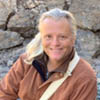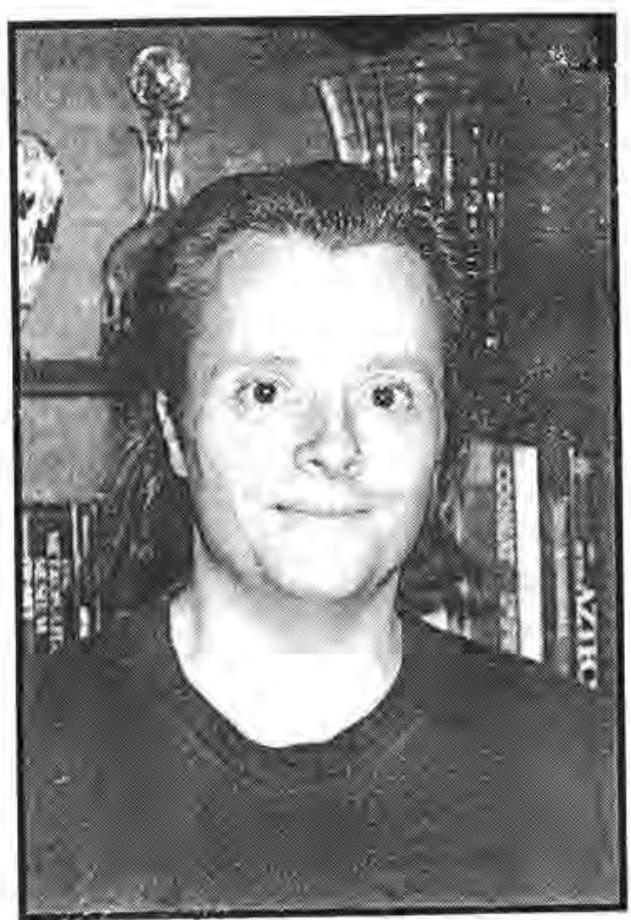The best news far in 1997 has been an invitation to write a column for Dream Network. I have chosen the title Network Nous, using the Ionian philosopher Anaxagoras's coinage for what he perceived as the universal mind. The scientist Itzhak Bentov in his book, Stalking the Wild Pendulum calls it the Isoelectric field which surrounds the earth. The Jesuit Priest, Teilhard De Chardin used the Catholic modifier: Noosphere. Many other names from all dreams of life describe the phenomena of shared mind as well. It is poignantly embodied in what is called the Erur dream, which translated means 'circle dream' where the initiate dreams of putting his arms around the world with the fingers touching, an all embracing symbol of global knowledge.
In Vol. 13 #3 of Dream Network, I premiered with an article called Integrative Dream Narration which describes a psychnique I've devised where individual dreams are merged into a collective story to create a shared consciousness, an oneiric Nous of sorts. I have been researching dreams and dreamwork for 25 years and am currently writing a book called Dream Democracy where I express my belief that dreams are urging us on to a more substantially political involvement in life. Currently residing in Minneapolis, MN., I am a freelance writer, art critic, intuitive counselor and valet/ferryman at a nearby old folks home as well.
In Network Nous, we will be specifically exploring how dreams have assisted in furthering the betterment of humanity by offering up the seeds of discovery, which in turn inspire practical inventions, artistic creations, as well as spiritual and secular visions. In the Islamic tradition, dreamed ideas such as these are the result of 'Istikhara' which means 'asking a favor of heaven.' In Sufism they could be considered a form of 'tallaji' which indicates 'a breakthrough of the limitations of time and space'. Inventionary dreams assist us in breaking through outdated belief systems, dogmas and doctrines and other restrictive codicils.
Historical as well as contemporary examples of dreams will be included in this column. Exploration will be employed as an alternative to interpretation and analysis. It is my belief that inventionary dreams hold energy patterns (morphogenetic fields) that we can utilize and benefit from. For all dreams are interconnected in a kind of electrostatic field in the collective unconscious waiting to be reactivated and utilized.
From St. Augustine to August Kekule and his Benzene ring dream to St. Perpetua and Joan de Arc's dream of leading an army to victory, we will investigate creationary and inventionary dreams themselves in confidence that they will serve as a catalyst for furthering our current dreams into manifest reality. But first let us start in the 1600s, when most of our recent troubles began, troubles which have made it exceedingly difficult to break completely through the limitations of time and space.
One of the most ironic conceits in western philosophical history is that Rene Descartes, the infamous 17th Century French philosopher who helped spark the Enlightenment, formulated his doctrine of mind body dualism from a series of dreams he had. How he tried to permanently rend the mind from the body, making reason reign eternally supreme all the while using the wellsprings of the irrational as inspiration, is a most vexing and troublesome quandary. When one regards just how psychologically, environmentally and spiritually devastating such a rift has been, even in our holographic era, the paradox becomes even more troubling. Could Rene, with pineal idiosyncrasy, have misinterpreted the deeper import of the dreams themselves? Was he fearful of what the dreams were really trying to tell him? Could his philosophy of reason have been a cerebral career move, a panicky defense against what the dreams were really trying to urge him towards? See Karl Stern's book Flight From Women. He offers some viable interpretations of Descartes's dreams in an attempt to answer these questions.
Three hundred years later, a teenager dreamed of riding a sled so fast that the stars in the sky started to distort into fantastic shapes and beautiful colors. This dream led him to eventually develop a unified counterpoint (with a three century pause between the notes) to Cartesian doubt. Mr. Einstein's unconscious was merely counter pointing, if not counter-punning with a kind of relative resolution or retribution which would once again reunite mind, body, even soul into a unified field of dreams. I suspect dream fugues of this nature are occurring at all times around the world. Perhaps there are contemporary dreams answering to the echoes of paleolithic dreams in such a fashion. We simply need to dilate our dream awareness to embrace such synchronic and diachronic fugues.
Even after the Tallaji of Einstein and others, the Cartesian illusion still dictates much of how we conduct our lives. Our science and industry for-profit organizations still rely on mind-body dualism which is used in attempt to control our world, make us unhappy. The dubious reputation for abstraction (from the word abstrahere: to draw away from) institutions ranging from the National Rifle Association to the National Academy of the Sciences have could very well be counterpointed if dreams are included in papers written by scientists, researchers, underwriters, in patent applications, even W-2 forms! Not just written descriptions and compulsory interpretations but drawings and paintings of the symbols, locales and dream personae as well. Imagine Ph.D theses peppered with dream icons instead of bar graphs and charts! Or how about a scientist dancing a dream in front of the members of the National Academy of the Sciences. A doctor doing a dream cha-cha for the AMA? All these are near-fetched possibilities if we simply ask a favor of our dreams to reveal the inventions needed to bridge the rift.










